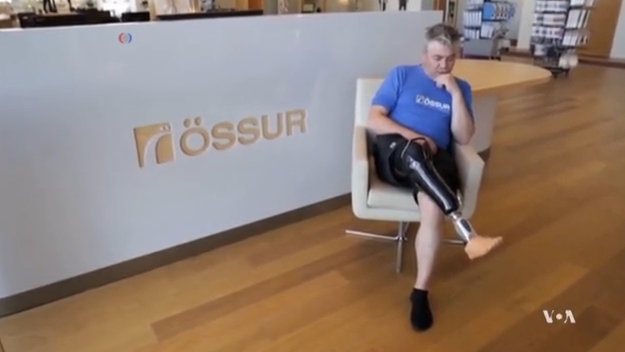It looks very natural when Gummi Olafsson moves his prosthetic leg.
“It took me about 10 minutes to get control of it. I could stand up and just walk away," said Olafsson.
 |
Olafsson says it feels as if he is moving it with his own muscles.
Last year, tiny sensors developed by the U.S.-based Alfred Mann Foundation were implanted in the muscle tissue left over when his lower right leg had to be removed ten years ago.
Orthopedic surgeon Thorvaldur Ingvarsson performed the operation.
“We put sensors into the muscles, and the muscles would pick up the signals, and the signals move their way into the prosthetics, and then the prosthetics react as your brain wants," said Ingvarsson.
Implanted sensors have been used before, but Ingvarsson says this is the first time the amputee has been able to move the bionic leg without intensely focusing on the task.
Olafsson says with practice he is increasingly getting better control of his artificial limb.
“Every day you're learning more about how to walk properly with the foot, how to use it to go downhill, uphill, downstairs, upstairs, even sitting down and standing up from a chair," he said.
Another orthopedic patient in Iceland has had similar results while earlier this year three patients in Austria started using the same technology to control their bionic hands.
Researchers say the next step is developing bionic limbs that will allow prosthetics users to actually feel what they touch.







